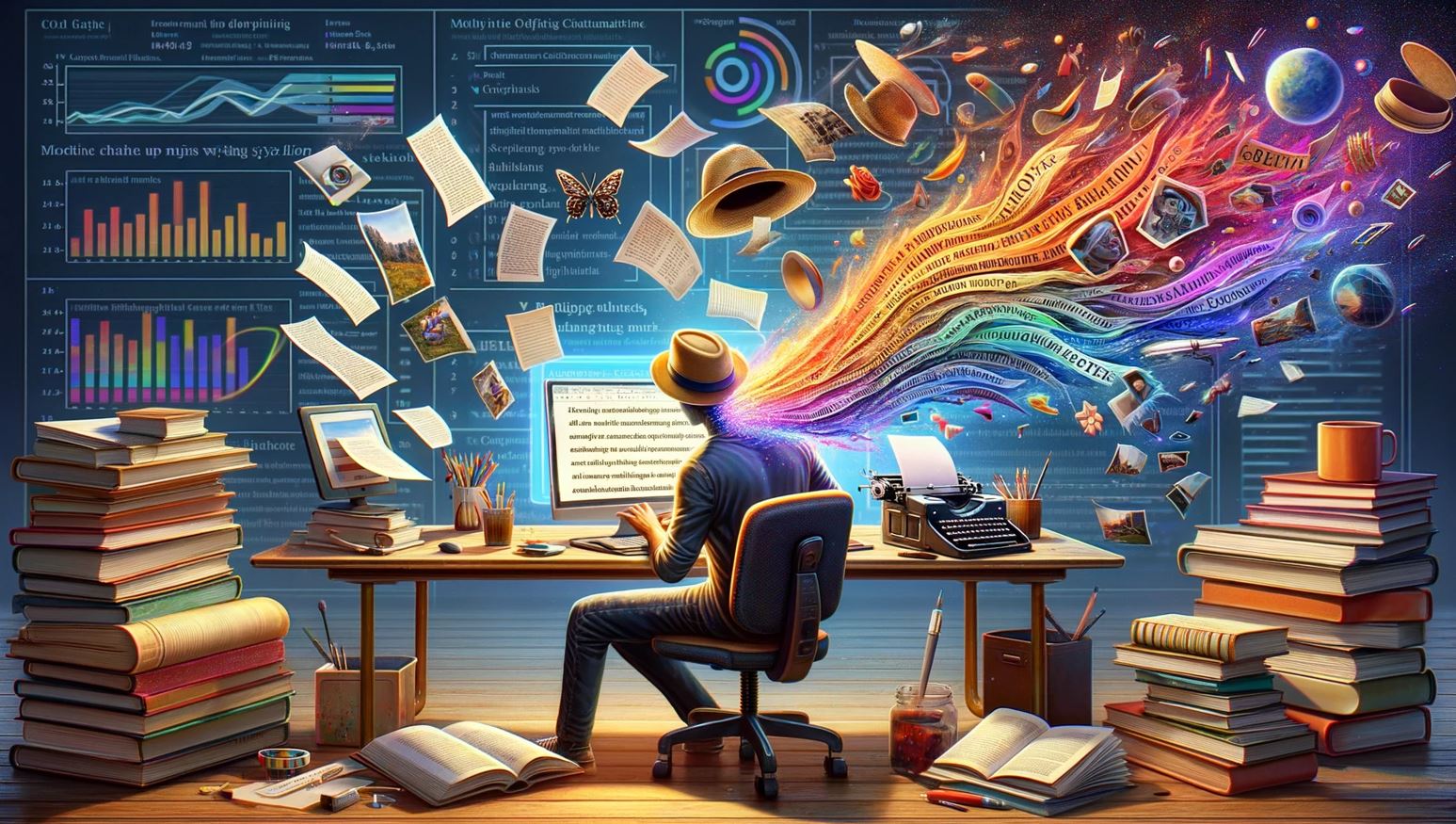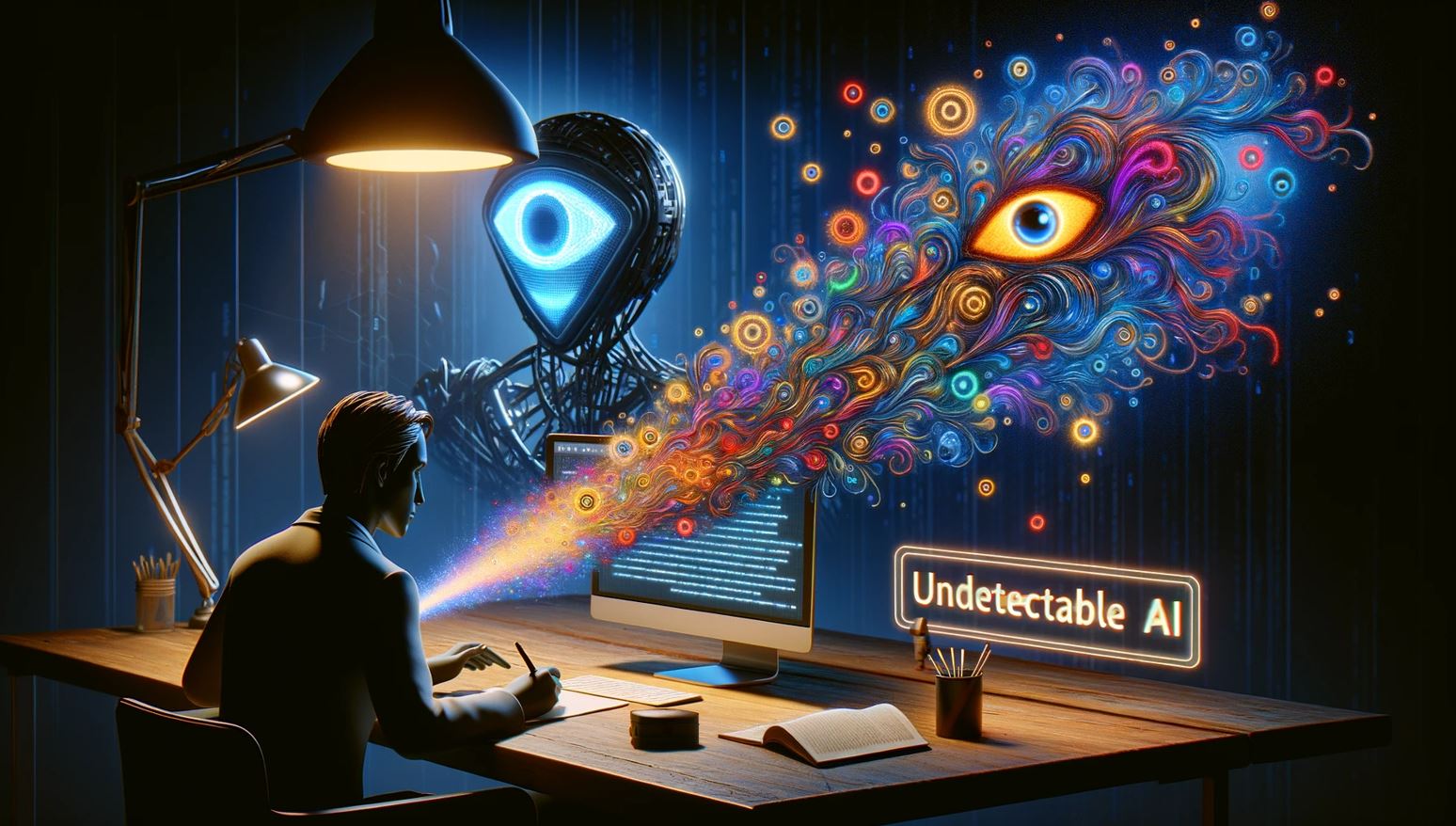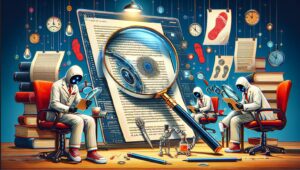Ever felt like AI is peeking over your shoulder, trying to tag your words as not really yours? If that’s a yes, then you’ll want to get the hang of how to avoid AI detection.
In our fast-moving digital world, with algorithms that can size up our text in a flash, slipping past these electronic watchdogs has become a real skill.
Whether you’re writing a scholarly paper or crafting content that needs to seem totally original, we’ve all had that moment facing those automated gatekeepers, ready to label our work as computer-made.

Try these new AI-powered tools:
- 5 Best AI Detectors To Unmask AI-Written Content With Accuracy
- 5 Best AI Writers To Boost Your Productivity And Content Quality.
- This "Secret AI Writer" Can Bypass AI Detection Like A Pro.
I’ve been there, dodging those same digital hurdles. With a bunch of content writers using online content generators for their work, staying off the AI radar isn’t just smart – it’s key to keeping our work legit.
After diving deep and trying all sorts of tactics, I’ve put together some solid strategies to help you sneak by AI like a pro. We’re talking mixing up how you build sentences and picking just the right words.
This article is packed with handy tips to keep your writing on the down-low from those relentless bots.
Article At-A-Glance
- In a time when AI is all over content, nailing how to dodge detection is crucial for keeping things real. This know-how is super useful online.
- AI detection tools, like Copyleaks and MIT-IBM Watson, are always upping their game. They use high-tech methods to spot machine-made writing, going beyond just guessing. These tools are pros at spotting patterns and subtleties in what we write.
- Beyond the usual stuff, tools like Undetectable AI and dynamic writing moves show how important it is to really be part of the content-making process. These new ways focus on real engagement and putting meaning into what you create.
- The article also looks at the big picture of staying honest in academics. It’s not just about the tech stuff – it’s about playing fair in the world of learning.
Table Of Contents
How To Avoid AI Detection
On my journey to figure out how to avoid AI detection, I’ve found some sneaky tricks that aren’t just the basics.
From using cutting-edge tools to sprucing up how I write, there are ways to stay under the radar and keep our digital tracks as quiet as a mouse.
Tapping into Undetectable AI
I found out Undetectable AI is a top-notch tool for making content that AI just doesn’t catch. This software’s built to sound just like a human writer, making it a secret weapon for writing stuff that passes plagiarism checks.
It’s a whiz at making language sound natural, so everything you write feels real and new.
Using this tool isn’t just about pressing ‘generate.’ It’s about smart editing and adding your own flair.
I always switch up how I structure sentences and throw in my own style. This keeps things interesting and stops AI from thinking it’s machine-made.
It’s super important not to get stuck on the same old phrases or patterns, because those clever AI detectors are always on the hunt for that.
With Undetectable AI, I’m always fine-tuning what I write. This way, I stay off the AI’s radar while making sure my content stays honest.
Tweaking Sentence Structure
Mixing up how you structure sentences is a smart move for dodging AI detection. It’s all about getting creative in the way you put your words together, making them slip past those computerized eyes.
- Go ahead and chop up those long sentences into shorter, snappier ones. This throws off the rhythm AI’s looking for.
- Mix up the order of your words. Kick things off with an object or a phrase that sets the scene, instead of the usual subject-first approach.
- Get playful with different sentence types. A little bit of everything – simple, compound, complex – keeps your writing fresh.
- Stick with the active voice when you can. It’s where the subject’s doing the action, making your sentences pop and tougher for AI to catch.
- Sprinkle in some rhetorical questions now and then. They draw in your readers and throw those pattern-seeking algorithms off track.
- Say things in a new way rather than just repeating stuff. It cuts down on repeats and makes your writing more original.
- Slide in some “what-if” phrases to get people thinking, without being too on-the-nose. This can be a slick move to avoid plagiarism detectors.
- Add clauses that give extra info while shaking up your writing rhythm. This can mess with AI that’s trained to spot certain writing flows.
Choosing Words Wisely for Smooth Flow
Moving from sentence structure to picking just the right words, let’s dive into using unique vocabulary that flows naturally.
To keep your writing under the AI radar, it’s more than just playing with sentences. It means choosing your words carefully and linking your ideas seamlessly.
- Make sure you’re using a bunch of different words. I always aim for less common yet precise words to avoid the patterns AI tools are sniffing out.
- Keep your ideas flowing logically. Each thought should lead smoothly to the next, confusing those AI detectors.
- Try out some ninja AI moves like using Undetectable AI. It mixes up your word choices and sentence structures so AI has a hard time spotting any patterns.
- Rewrite things with a twist. Putting your original sentences into a whole new language keeps your content fresh and out of AI’s grasp.
- Use tools like QuillBot wisely to rephrase your stuff. It keeps the main idea but changes the wording enough to dodge AI detection.
- Be a synonym wizard. Where you can, throw in synonyms and similar phrases that capture your point without being repetitive.
Mixing Up Writing Styles
I’ve found that switching up my writing style really throws off those AI detection tools. Like, one minute I’m all about the facts and figures, and the next, I’m sharing a story from last summer’s road trip that’s totally related.
It’s like wearing different hats. I might be laying down some serious data in one paragraph, then spinning a yarn that fits right in with my topic in the next.
This approach lets me share my thoughts in a more vibrant way.
I might debunk some myths if a section’s looking too plain, or throw in some hands-on tips to make sure every line’s doing its job.
It’s not just about outsmarting AI. It’s about crafting content that’s genuinely engaging and personal.
It’s not just about outsmarting AI. It’s about crafting content that’s genuinely engaging and personal.
That way, even as AI gets sharper, it won’t be able to tag my mix of storytelling and analysis as anything but the work of a real person.
Spicing Up Your Writing with Synonyms and Paraphrasing
To dodge AI detection, you’ve gotta get crafty with your words. I mix things up by hunting down synonyms with a thesaurus, slipping them into my writing like a pro.
But hey, it’s not just about swapping words. I totally redo sentences, keeping the heart of the message while giving them a brand new look.
That’s where paraphrasing jumps in. It’s all about giving a fresh spin to what you’ve got, keeping the soul but changing the outfit.
Mastering this trick helps me keep my writing real and under the radar in a world crawling with clever algorithms. It’s like playing a sneaky word game, tweaking my phrases and vocab so every bit sounds original and just mine.
Now, let’s check out why using a bunch of different writing styles can help you sneak past AI eyes.
Cracking the Code of AI Detection Tools

Time to dive into the world of AI detection tools, where algorithms are on a constant hunt for stuff written by machines.
These digital watchdogs have gotten really sharp, and figuring out how they tick is key if you want to navigate these waters smoothly.
What’s the Scoop on AI Detection Tools?
AI detection tools are these super-smart programs that are all about catching writing made by computers, not people. They’re like the guards at the digital door, making sure every piece of writing is the real deal.
I’ve seen these tools at work, crunching through fancy algorithms to figure out if a piece of writing is computer-made.
Big players like Copyleaks and MIT-IBM Watson have cooked up systems just for this. They go through writings, hunting for hints that maybe a human didn’t really write it.
It’s pretty wild how they get into the tiny details of language, looking for little signs that are invisible to us but totally obvious to their techy brains.
How Do These AI Detection Tools Roll?
Stepping up from what these tools are, let’s get into how they do their thing. These fancy systems go deep into analyzing text, using top-notch language models to sift through what you write.
Like detectives looking for clues, these tools check out your writing for signs it might be machine-made. They’re all about checking out your sentence style, word picks, and how it all fits together.
They’re not just guessing around. They use serious tactics, kind of like the AI writers they’re trying to spot!
They compare your stuff to huge databases, looking for patterns that say “computer” more than “human.” They flag bits that seem too perfect or cookie-cutter, which usually points to a non-human writer.
It’s a big game of pattern spotting. If your words follow a path that looks more like a computer’s work than a human’s, you could get called out for not playing fair.
But remember, even with all this high-tech stuff, sometimes you need a person to catch the finer points. Sometimes, it’s those human touches that make all the difference!
The Real Deal on Dodging AI Detection
Staying off AI’s radar isn’t just about keeping things on the down-low. It’s really about growing as a person and staying true to yourself.
It’s about making sure your work shouts out your own voice and shows off the smarts you’ve worked hard for. This keeps you looking legit in a world that’s getting more and more digital by the day.
Sticking to Honest Work in School
For students, it’s super important to keep things honest in their studies. Schools are rolling out AI detection tools to catch cheaters and keep the learning game fair and square.
It might be tempting to take the easy way out, but using AI to skip the real work isn’t just breaking the rules—it’s messing with the whole idea of playing fair in school.
Students gotta step up and say no to shortcuts that mess with doing the right thing. Cheating doesn’t just get you in hot water right now. It can mess up your rep and cheapen everyone’s hard work.
Sure, tech’s got its cool sides. But using it should be about upping your game, not falling into traps like copying or cheating – stuff that AI will totally catch you on.
It’s all about learning for real, making your mark with honest effort and smarts.
Boosting Your Writing Game
Figuring out how to stay off AI’s grid has turned into a cool challenge to sharpen my writing skills.
Changing up sentences while keeping their meaning isn’t just about sneaking past AI. It also gets me diving into new words and sentence styles, making my writing flow better and sound more human.
Every time I write, I’m aiming to pick words that make sense and stick to my point.
It’s not about tricking some computer program. It’s about keeping things fresh and making my writing pop.
It’s not about tricking some computer program. It’s about keeping things fresh and making my writing pop.
This way of doing things isn’t just about dodging AI. It’s a solid move for students to keep their work honest. It shows them how to write like a boss, a skill that’s gonna be useful long after they’ve left school.
Earning a Solid Rep for Being Straight-Up
Honesty’s the foundation of a solid reputation. By learning the ropes of avoiding AI detection and steering clear of shortcuts, students show their teachers and classmates that their work’s the real deal.
Staying true to what’s right is a big deal. It’s about more than just grades. It’s about showing that honesty counts in every piece of work you do.
Building a rep for being honest isn’t a cakewalk, but it’s totally worth it.
Every paper or project done on the up-and-up builds trust with your teachers and sets you on a path for long-term success.
So, let’s keep honesty front and center, making sure our work shows our true effort and what we’re learning.
Staying committed to this honest path gets students ready for bigger challenges down the line, where being trustworthy is just as important as being smart.
In the school world, mixing AI and ethics is a big deal. With all these fancy AI tools around, cheating’s turned into a clever ghost that’s super tricky to spot.
Schools are getting tough, making sure teachers are always sharp-eyed for any AI-assisted cheating.
But here’s the thing. When students use AI tools the wrong way, they’re basically shaking the foundations of honest learning we’re trying to build.
Every paper they write by themselves, without any sneaky help, is a thumbs up for honesty in school.
I think about all the teachers who have to keep their eyes peeled, ready to spot any papers that smell like AI.
They’re more than just teachers. They’re like the heroes keeping the education world honest.
And as tech keeps evolving, there’s one thing that stays the same – we gotta teach our students to be straight-up honest. That’s super important for the folks who’ll be leading the charge tomorrow.
Staying Ahead of AI Detection the Clever Way
Figuring out how to avoid AI detection means getting savvy with your strategies. By using cool tools like Undetectable AI in a smart way, you can make your writing stand out without setting off any AI alarms.
It’s all about being a step ahead, changing up your sentence style and using a bunch of different words that leave AI scratching its head.
The secret sauce is mixing a little bit of tech with your own style of writing, so your work screams “you.”
Just imagine the awesome feeling of knowing your work is all you, not tampered with by some AI.
With these tricks up your sleeve, you’re all set to write boldly in a world where AI’s always lurking.
Meet our resident tech wizard, Steve the AI Guy. Now, before you get any wild ideas, let’s clear up one thing – he’s 100% human! I mean, he’s got the work history to prove it. He spent a decade diving into the deep end of the tech industry doing business intelligence work, splashing around with two of the world’s largest business consulting companies, Deloitte and Ernst & Young. Learn More










